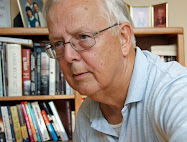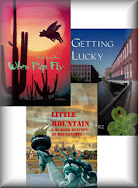Photographer and Vietnam veteran Bill
“Crawdaddy
” Crawford presents an excerpt from his upcoming memoir Just Like Sunday on the Farm: Crawdaddy Remembers the Nam and After.
The 18 Minute Rule Throws Jimmy Pro for a Loop in Gotham City
By Bill Crawford
Jimmy Pro hit the subway
turnstile at full tilt. We stopped for an impromptu bathroom break on the way
to Chelsea’s Milk Gallery. Draining your lizard is a priority at over 70,
especially when you are jammed tightly in a car of a lurching train.
We thought that we could just
slide in and out of the station long enough to find a restroom. We were hauling
some serious ass to hear a presentation by the big time New Yorker
photographer, Platon, who was delivering a serious rap about some of his recent
work.
Jimmy and I meet up a couple of
times a year to work on our emerging photographic technique, Forensic Foraging.
It focuses on plodding, throwback techniques that are mostly now eschewed by
younger, techno-driven shooters.
We thrive on photographing the
mundane using simple techniques highlighted years ago by Kodak in their Brownie
Hawkeye Camera Owner’s Manual. Our credo trumpets “straight out of the camera”
with little computer manipulation.
Jimmy is seriously addicted to
the New Yorker. He devours it weekly in his Sydney, North Beach haunts. As he
swills his java, he especially venerates the tony writing and the 20-page
features on contemporary issues. He gravitates immediately to Platon’s photographs
which differ immensely from ours even as his often flirt with instant
immortality.
Platon has a big rep in the New
York photog world while we labor in near obscurity being only ex US Army photojournalists
with a near 50-year friendship going. Platon’s stark images are so arresting
that even hardened minimalists like us are drawn into his flame. We hoped to
hear the great man in person if we could only speed through the rush hour
underground to the famous Milk Gallery.
Negotiating the trains on the fly
is a Gotham City survival skill of the first order. You have to pace yourself
and not let multiple flights of stairs burn you out. Zig-zagging through the
crowds is behavior usually restricted to water bugs. But the deft Metro Card
swipe can make or break you. Getting through the turnstile on the first try is
imperative. It requires soft hands and riveted concentration akin to that of an
NFL wideout.
Jimmy, being an ex-Ivy League
D-back, had the card swipe down to an art form. He raked his Metro Card through
the slot in a single, smooth, steady movement. Then he rolled his thick body
into the unlocked turnstile in a quick, flowing motion. I, on the other hand,
often swiped my card only to encounter an immobile turnstile. My card swipe was
herky-jerky and half-assed. I am from North Carolina, and big city finesse is
way above my pay grade.
On this busy evening, the Platon
lecture was at the top of our agenda. As writers, we were accustomed to
rejection, but that night offered up full-force rejection. Jimmy unleashed his
usual slick card swipe, but as he glided into his infamous turnstile roll
things turned to shit in a hurry.
The silver gate was unyielding.
Jimmy hit the barrier like the proverbial ton of bricks. His body went vertical
in a flailing downward jackknife. His head went over the turnstile and straight
down to the pavement. On their way up, his heels missed my nose by a hair, as I
trailed him closely anticipating another snappy subway entry. People behind me
accordianed into my rumpus as I ground to a dead halt.
Jimmy’s painful landing was
caused by the MTA’s legendary 18 Minute Rule. Enterprising New Yorkers often
passed their Metro Cards back over the turnstiles to give friends and family
free rides. Moreover, professional hustlers bought multiple Metro Cards to
constantly be able to sell rides at deep discounts. The fraudulent
entrepreneurs cost the MTA millions.
Our bathroom break in Bryant Park
outside of the 42nd St. Station set the 18 minute, no reentry rule in motion.
Our Metro Cards were disabled and Jimmy hit the gate with a dead card paralyzed
by the MTA bureaucracy. The blessed relief that we enjoyed as we emptied out in
the public restroom was quickly eclipsed by Jimmy’s spectacular header as he
rushed back to the platform.
A subway cop witnessed the melee
that Jimmy caused at the gate. Nobody else was hurt, although several commuters
behind me sprawled out on the pavement. The officer offered to call an
ambulance, but Jimmy demurred as somebody handed him a cup with ice to press
against his throbbing forehead. A street musician muttered something about the
“damned 18 minute rule,” and we looked at each other in stunned amazement. By
now, more than 18 minutes had passed, and our thoughts somehow turned back to
Platon.
Jimmy was still very shaky, but
we got on the train and we finally made our way to Chelsea. We eased into the
crowded Milk Gallery, and we found Platon holding forth before a throng of
photography devotees. We were pretty late, and he was winding down by
chronicling the background about his “Service” exhibition which was showing
there now.
~~~~~
All of the images are quite well
known. They offer stark insights into the aftermath of the Iraq War. One of the
most famous pics shows a grieving mother draped around her son’s tombstone at
Arlington National Cemetery. He was an Islamic American GI killed in combat.
The Quran and other Muslim artifacts are visible at the gravesite.
Platon vividly described his
meeting with the mother to discuss his planned shot. In his clipped English accent,
he related the poignant story of how the dead soldier’s personal effects had
arrived at the family home in a prim box. The mother eventually opened it to
find that her dead son’s clothing had been washed and neatly folded. Her most
fervent wish to smell his body scent one last time was dashed by blind military
efficiency. People in the Gallery openly wept at the pathos of this revelation.
~~~~~
I was shell-shocked by Platon’s
story and our earlier subway drama. As I reeled, Jimmy moaned and swayed precariously.
He was obviously concussed and in need of medical attention. Moreover, Platon’s
anecdote triggered my memory to retreat back to a dreaded place.
It was December 1968, and my
infantry unit was pinned down in Antenna Valley south of Da Nang by crack North
Vietnamese regulars. I hadn’t flashed back in years, but Platon’s chilling
images and tender commentary proved to be a catalyst deep in my cerebral core.
I spent every moment in the Army
up to that long ago day with a young carpenter from Cincinnati, Mike Bach. We
were drafted together at Fort Bragg, and we stayed in the same training units
all the way to Alpha Company, the Nam, and combat. We then were placed in
different platoons of the same rifle company. He was tall and strong, so he
landed a job humping the field radio for his platoon leader. The long radio
antenna made RTOs (radio telephone operators) inviting targets for enemy
snipers. Mike took a lethal round that day as we walked headlong into an NVA
unit on the move off of Nui Chom Mountain.
I later visited the Vietnam
Memorial in DC to pay my respects to the dead carpenter. When he died, I penned
a heartfelt description of the printable details of his death to mail to his
family. Now, the Islamic mother’s gut-wrenching lament for her dead son’s body
scent triggered long suppressed torment deep inside of me.
I could picture Mike’s young,
smiling face vividly, but I could not remember a single iota about his voice. No
audio replayed in my mind. Once again, the Jungle War engulfed me when I least
expected it.
Jimmy was concussed, and I lapsed
into a disbelieving funk. For us, things screeched to a halt. I headed to the
hospital with my head down to hide my tear-stained cheeks.
~~~~~
Jimmy finally got checked out,
and I eventually drank a couple of beers in search of sleep. The next day we
gingerly continued shooting the city utilizing our throwback technique,
Forensic Foraging. We captured every scene along the way in a funky, minimalist
style. Maybe some photography mag might profile us before we hang it up? The
odds are against anachronisms like us. Photo mags aim their advertising to
young techno-driven photogs. Not much chance they will give us any play.
We hope to shoot again together
soon. Jimmy always carefully lays out sensational venues for us to forage. I
don’t yet know where we will wind up, but the odds are extremely high that we
won’t see many shiny turnstiles.
I may well sleep again in Jimmy’s
favorite road haunt, the Motel 6. We might even experience escapades that will
surpass the drama of the subway and the Milk Gallery. But if I awake with a
start in the wee hours of the night, I hope to hear a missing voice from the
Jungle War. The familiar video in my old, fading mind could really use a final
audio track. Then maybe I could say a proper goodbye to a young carpenter I
knew long ago.
William C. Crawford is a writer and photographer living in Winston
Salem, North Carolina. He was a grunt and later a combat photojournalist in Vietnam. Jim
Provencher is a teacher, poet, and lensman in Sydney, Australia. They met at Fort
Hood, Texas in 1970 where they were Army photojournalists.

















